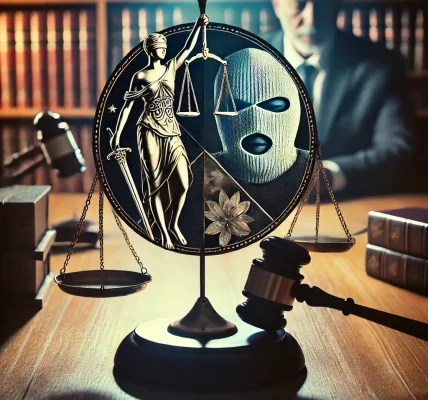White-collar crimes are non-violent offenses that typically involve fraud, deception, or financial misconduct. These crimes are often committed by professionals or business individuals and can result in severe legal penalties, including fines, imprisonment, and reputational damage.
Understanding the different types of white-collar crimes, their penalties, and potential legal defenses is crucial for individuals and businesses to navigate the legal landscape effectively.
What Are White-Collar Crimes?
White-collar crimes refer to financially motivated offenses that do not involve physical violence. These crimes are usually committed by individuals in business, government, or corporate settings.
Common characteristics of white-collar crimes include:
- Fraudulent Intent – Deception for financial gain.
- Breach of Trust – Violation of fiduciary responsibilities.
- Complexity – Use of sophisticated financial or corporate structures.
- Large-Scale Impact – Potential damage to multiple victims.
Types of White-Collar Crimes
White-collar crimes cover a broad range of offenses. Below are some of the most common types:
1. Fraud
Fraud is intentional deception to secure financial gain. Common types include:
- Securities Fraud – Insider trading, stock manipulation.
- Wire Fraud – Use of electronic communication to commit fraud.
- Mortgage Fraud – Misrepresentation in mortgage applications.
- Healthcare Fraud – False insurance claims, billing scams.
2. Embezzlement
Embezzlement occurs when someone misappropriates funds entrusted to them. Examples include:
- Employee Theft – Stealing from an employer’s funds.
- Ponzi Schemes – Using new investors’ money to pay returns to earlier investors.
- Charity Fraud – Misusing donations for personal gain.
3. Money Laundering
Money laundering involves concealing the origins of illegally obtained money to make it appear legitimate. It typically includes:
- Placement – Introducing illicit money into the system.
- Layering – Complex transactions to disguise the source.
- Integration – Using cleaned money for legal activities.
4. Identity Theft
Identity theft is the fraudulent acquisition and misuse of someone’s personal information for financial gain. Methods include:
- Phishing Scams – Deceptive emails to steal personal data.
- Credit Card Fraud – Unauthorized use of financial information.
- Synthetic Identity Theft – Combining real and fake information to create a new identity.
5. Bribery and Corruption
Bribery involves offering money or gifts to influence government officials or corporate executives. Forms include:
- Corporate Bribery – Paying officials to gain business advantages.
- Political Corruption – Illegal campaign contributions.
6. Tax Evasion
Tax evasion is the illegal avoidance of taxes through deceptive practices, such as:
- Underreporting Income – Concealing earnings.
- Offshore Tax Havens – Hiding assets in foreign accounts.
- Fake Business Expenses – Claiming false deductions.
Penalties for White-Collar Crimes
The consequences of white-collar crimes vary based on severity, intent, and jurisdiction. Common penalties include:
1. Fines and Restitution
- Financial penalties can range from thousands to millions of dollars.
- Courts may order offenders to repay victims for damages.
2. Imprisonment
- White-collar crimes can result in significant prison sentences.
- For example, securities fraud can lead to 20+ years in prison.
3. Asset Forfeiture
- Authorities can seize illegally obtained assets, including real estate, bank accounts, and luxury items.
4. Criminal Record and Reputation Damage
- Convictions permanently impact career prospects.
- Corporate executives may face lifetime bans from financial markets.
5. Probation and Community Service
- Some first-time offenders receive probation instead of prison time.
- Courts may require offenders to perform community service.
Legal Defenses Against White-Collar Crime Charges
Being accused of a white-collar crime does not automatically mean conviction. Several legal defenses can be used, including:
1. Lack of Intent
- Prosecutors must prove intentional wrongdoing.
- If the defendant can show they acted in good faith, they may avoid conviction.
2. Entrapment
- If law enforcement pressured the defendant into committing the crime, entrapment can be a valid defense.
3. Insufficient Evidence
- A lack of clear documented proof can weaken the prosecution’s case.
- Defense attorneys challenge inconsistent or weak evidence.
4. Mistaken Identity
- White-collar crimes often involve multiple individuals.
- If wrongly accused, a defendant may argue misidentification.
5. Duress or Coercion
- If an individual was forced to commit fraud under threat, duress can be a valid defense.
6. Violation of Constitutional Rights
- If authorities conducted illegal searches, seizures, or interrogations, the case may be dismissed.
How to Protect Yourself from White-Collar Crimes
To avoid legal trouble, individuals and businesses should:
- Follow Financial Regulations – Ensure all transactions comply with legal standards.
- Maintain Accurate Records – Keep detailed and transparent financial records.
- Avoid High-Risk Activities – Be cautious with investments and partnerships.
- Seek Legal Advice – Consult attorneys before making major financial decisions.
- Implement Compliance Programs – Businesses should enforce strict anti-fraud policies.
Conclusion
White-collar crimes have serious legal and financial consequences, including fines, imprisonment, and reputational damage. Understanding the different types, penalties, and legal defenses is essential for individuals and businesses to protect themselves.
If you are accused of a white-collar crime, seeking immediate legal counsel is the best way to navigate the situation effectively.




